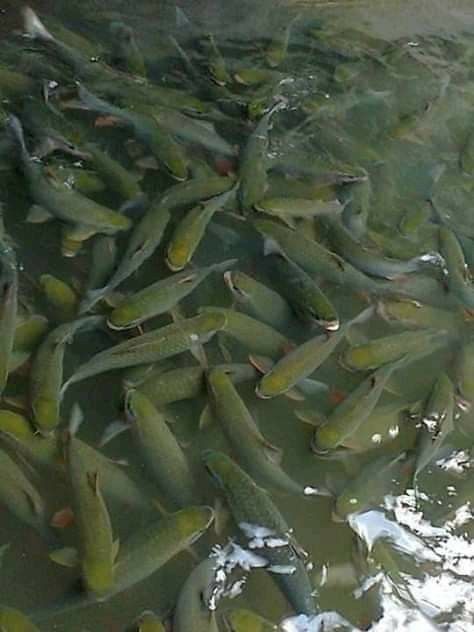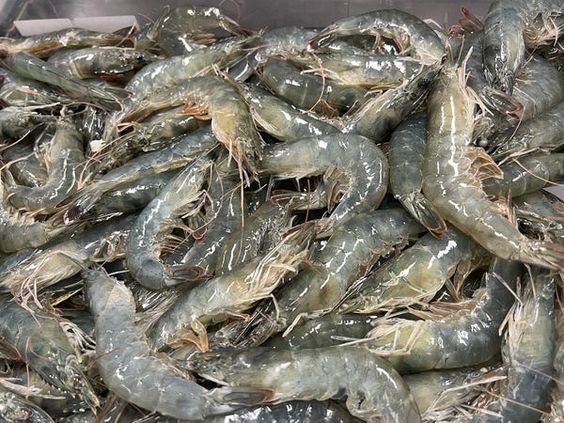Black Tilapia Feed: A Comprehensive Guide to Nourishing Your Thriving Fish
Black Tilapia Feed, also known as Oreochromis niloticus, is a prominent species in global aquaculture. Prized for its fast growth rate, delicious flesh, and adaptability to various environments, black tilapia has become a cornerstone of the seafood industry. However, maximizing this potential hinges on providing them with a balanced and nutritious diet. This article delves into the world of black tilapia feed, exploring its benefits, goals, formulation considerations, and best practices.
Black tilapia are omnivorous fish, meaning their diet incorporates both plant and animal matter. In their natural habitat, they consume algae, plankton, detritus (decaying organic matter), and small insects. However, in aquaculture settings, formulated feeds provide a controlled and consistent source of nutrients to optimize growth, health, and overall well-being.
Contents
- 1 The Importance of Black Tilapia Feed
- 2 Goals of Black Tilapia Feed Formulations
- 3 Ingredients Commonly Used in Black Tilapia Feed
- 4 Factors to Consider When Choosing Black Tilapia Feed
- 5 Benefits of Using Commercial Black Tilapia Feed
- 6 Innovative Ideas and Approaches in Black Tilapia Feed
- 7 Advantages of a Well-Managed Black Tilapia Feeding Program
The Importance of Black Tilapia Feed
High-quality black tilapia feed offers a multitude of benefits for both fish farmers and consumers:
- Enhanced Growth: A well-formulated diet containing essential proteins, carbohydrates, lipids, vitamins, and minerals promotes faster growth rates, leading to higher yields and improved profitability for farmers.
- Improved Feed Efficiency: Efficient feed utilization translates to less feed waste and minimizes environmental impact. Optimized feed formulations ensure nutrients are readily absorbed by the fish, reducing the amount of feed required for growth.
- Enhanced Fish Health: Balanced nutrition strengthens the immune system of tilapia, making them more resistant to diseases and improving overall survival rates.
- Superior Flesh Quality: The right feed composition directly influences the taste and texture of the fish. A balanced diet can enhance the flavor profile and fat content, leading to a more desirable product for consumers.
- Environmental Sustainability: Sustainable feed production practices that utilize responsibly sourced ingredients minimize the environmental footprint of tilapia farming.
Goals of Black Tilapia Feed Formulations
Developing a successful black tilapia feed formulation revolves around achieving specific goals:
- Meeting Nutritional Requirements: The feed must provide all the essential nutrients in the appropriate quantities for optimal growth and health at each stage of the fish’s life cycle.
- Palatability: The feed should be readily consumed by the fish, ensuring they receive the necessary nutrition. Attractants and flavorings can be incorporated to enhance palatability.
- Digestibility: The feed should be formulated with ingredients that are easily broken down and absorbed by the fish’s digestive system, maximizing nutrient utilization.
- Cost-Effectiveness: Feed production costs significantly impact farm profitability. Balancing the nutritional value with affordability is crucial.
- Environmental Sustainability: Sustainable ingredient sourcing and responsible manufacturing practices minimize the environmental impact of feed production.
Ingredients Commonly Used in Black Tilapia Feed
Black tilapia feeds typically comprise a blend of various ingredients, each playing a vital role in their nutritional profile:
- Protein Sources: Fishmeal, soybean meal, and other plant protein sources like corn gluten meal and wheat middlings provide essential amino acids for growth and development.
- Carbohydrates: These provide energy and can come from sources like wheat, rice bran, and corn.
- Lipids: Fats and oils are crucial for energy storage and healthy cell development. Sources include fish oil, vegetable oils, and algal oils.
- Vitamins and Minerals: These micronutrients play a vital role in various bodily functions and are often supplemented in premixes to ensure adequate intake.
- Binders: Ingredients like wheat flour help bind the various components of the feed into pellets.
Factors to Consider When Choosing Black Tilapia Feed
Selecting the most suitable black tilapia feed requires careful consideration of several factors:
- Life Stage: The nutritional needs of tilapia vary significantly throughout their development. Fry, fingerlings, and adult fish require specialized feed formulations to meet their specific needs.
- Water Quality: Water parameters in the aquaculture system can influence feed digestibility. Some formulations may be tailored to specific water conditions.
- Intensification Level: The stocking density in the aquaculture system can impact feed requirements. High-density systems may necessitate feeds with higher protein content for optimal growth.
- Local Availability and Cost: The availability and cost of feed ingredients in your region will influence your choice of feed.
Benefits of Using Commercial Black Tilapia Feed
While some tilapia farmers may opt for homemade feeds, commercially produced options offer several advantages:
- Balanced Nutrition: Commercial feeds are meticulously formulated to provide a complete and balanced diet, ensuring all essential nutrients are present in the correct proportions.
- Quality Control: Reputable feed manufacturers adhere to strict quality control measures, guaranteeing consistency and optimal nutritional value in each batch of feed.
- Technical Expertise: Commercial feed companies employ experienced nutritionists who formulate feeds based on the latest research and best practices in tilapia aquaculture.
- Variety of Options: Commercial producers offer a wide range of tilapia feeds catering to different life stages, water conditions, and budgetary needs.
Innovative Ideas and Approaches in Black Tilapia Feed
The tilapia feed industry is constantly evolving, with research exploring innovative ingredients and approaches to optimize nutrition and sustainability:
- Alternative Protein Sources: With concerns about the environmental impact of traditional protein sources like fishmeal, research is exploring alternative protein sources like insect meal, single-cell protein, and algae.
- Prebiotics and Probiotics: These additives can enhance gut health and immune function in tilapia, leading to improved growth and disease resistance.
- Functional Ingredients: Supplements like antioxidants and immune-boosting compounds can be incorporated into feeds to further enhance fish health and resilience.
- Precision Feeding: Emerging technologies like automated feeding systems allow for targeted feed delivery based on individual fish size or growth stage, optimizing feed utilization and minimizing waste.
Advantages of a Well-Managed Black Tilapia Feeding Program
Implementing a well-managed black tilapia feeding program offers a multitude of advantages:
- Increased Profitability: Optimized feed utilization, improved growth rates, and reduced disease incidence lead to higher yields and improved farm profitability.
- Enhanced Fish Quality: A balanced diet translates to superior flesh quality with better taste and texture, leading to a more desirable product for consumers.
- Environmental Sustainability: Responsible feed production practices and efficient feed utilization minimize the environmental footprint of tilapia aquaculture.
- Improved Animal Welfare: By providing a complete and balanced diet, fish welfare is enhanced, ensuring their health and well-being.
Black tilapia feed plays a pivotal role in the success of tilapia aquaculture. By prioritizing balanced nutrition, responsible sourcing, and innovative approaches, farmers can optimize their feeding programs to promote healthy fish growth, enhance product quality, and ensure the sustainability of this vital food source. By delving into the topics suggested above, we can continue to push the boundaries of black tilapia feed development, fostering a thriving and responsible aquaculture industry.






